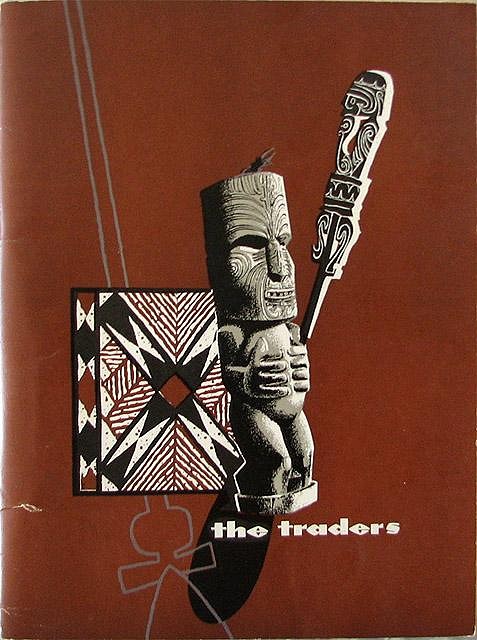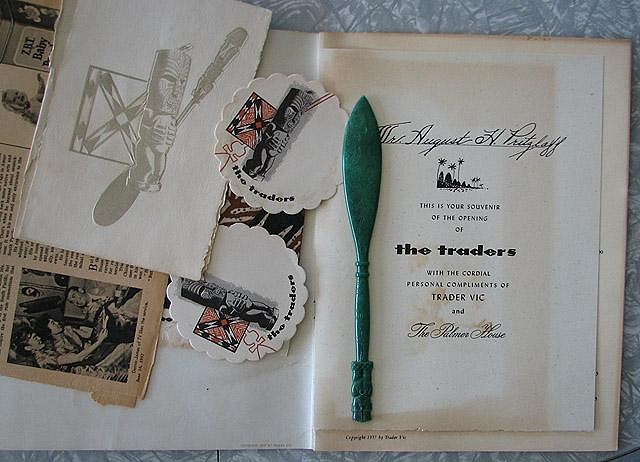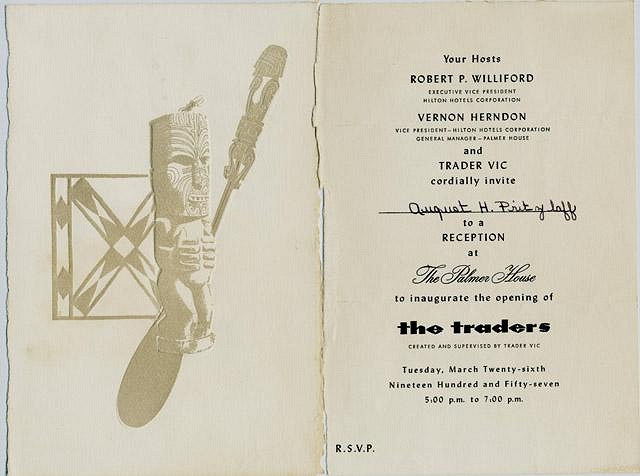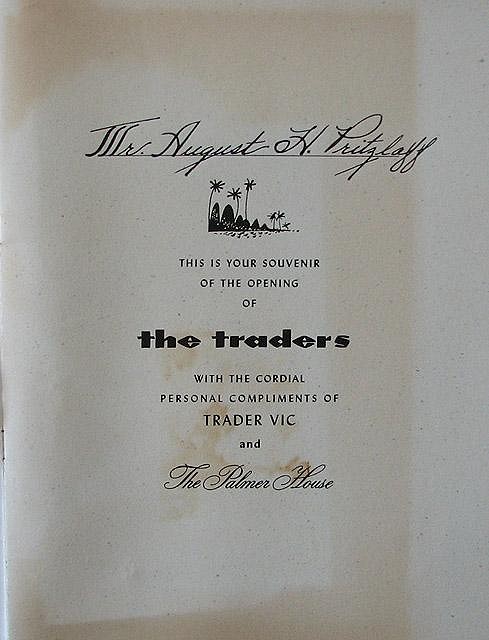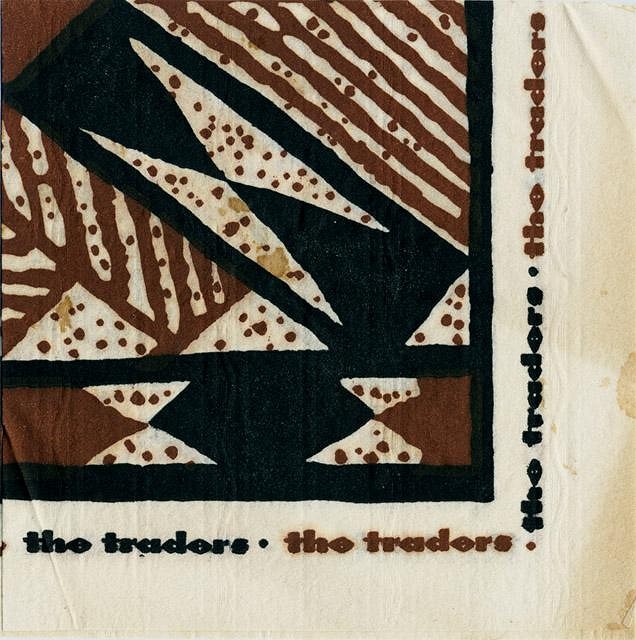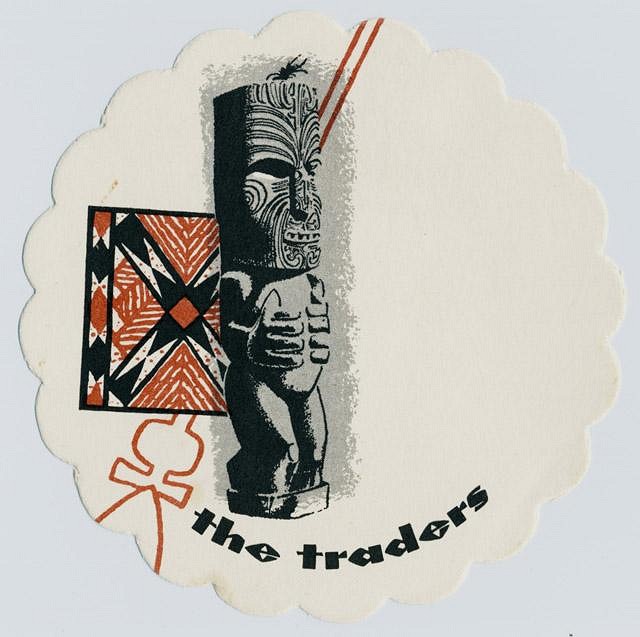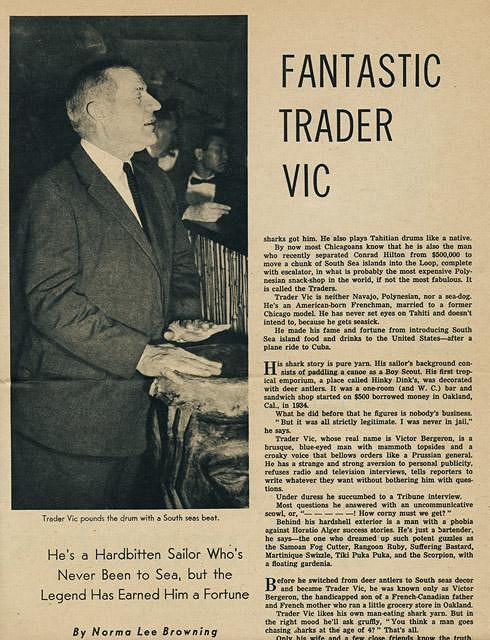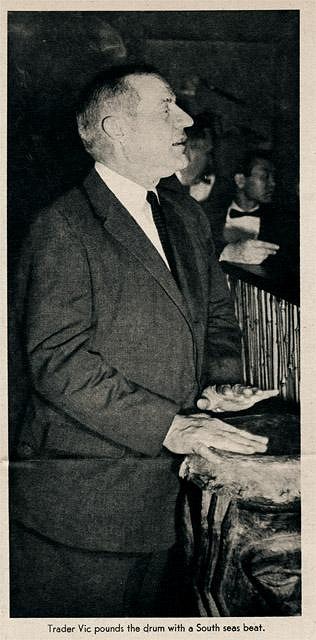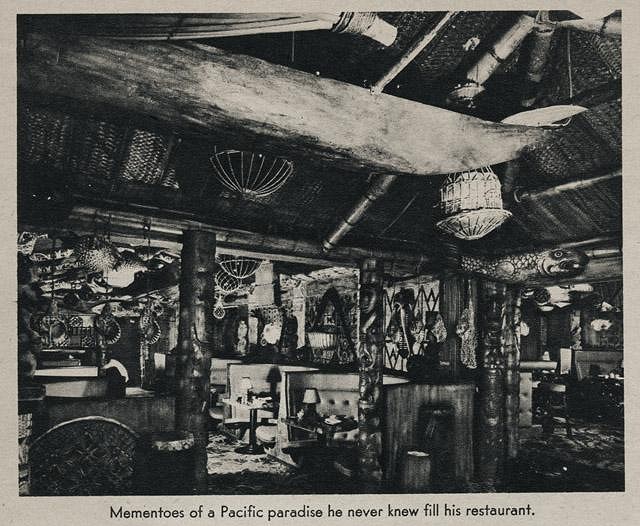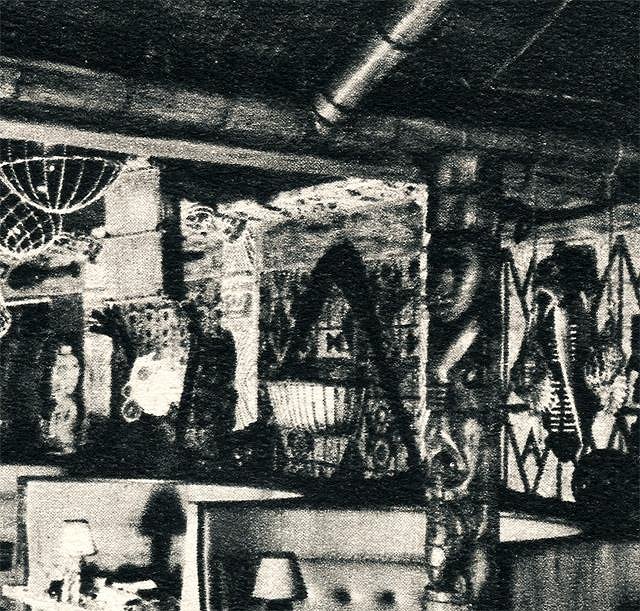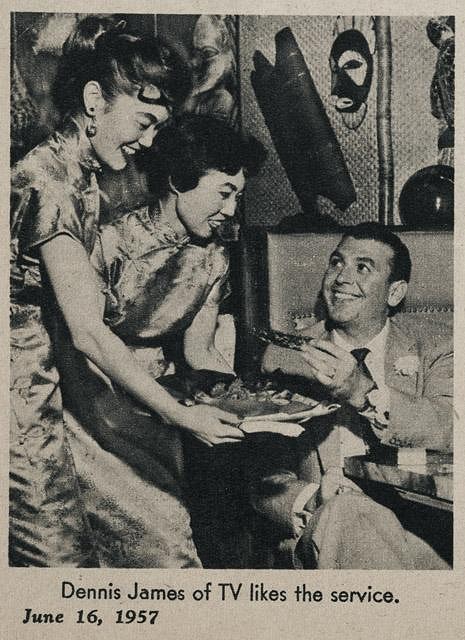Tiki Central / Locating Tiki / The Traders (Trader Vic's) Palmer House, Chicago, IL (restaurant)
Post #512265 by Sabu The Coconut Boy on Sat, Feb 20, 2010 8:47 PM
|
STCB

Sabu The Coconut Boy
Posted
posted
on
Sat, Feb 20, 2010 8:47 PM
I managed to find one of the old-style TRADERS menus from the Palmer House location and paid $5.00 for it. Inside was a treasure-trove of ephemera-swag from the 1957 opening-night inauguration of the restaurant:
:down: Parchment-paper embossed invitation with deckled edges. The piece on the left is the folder. On the right is the invitation card. :down: The menu itself is a special opening-night souvenir edition. This is the first page. (August Pritzlaff was the Director of Health and Physical Education of the Chicago public school system) :down: Cocktail napkin :down: Coasters and giant paddle-swizzle :down: Best of all is this yellowed, 2-page article from the June 16, 1957 edition of the Chicago Sunday Tribune Magazine. I've never seen it before. *BREEZING IN AND OUT of Chicago these days is a salty, rough-hewn character with a name that many people mistake for a Navajo trading post or a fictional South Sea island beachcomber. He is Trader Vic, the one and only original. By profession, Trader Vic is a restaurateur who prefers to be called a saloonkeeper and whose name is synonymous with exotic rum drinks and tropical foods. By reputation he is an enigmatic, legendary incarnation of a refugee from a pirate ship. He has a sailor's pungent vocabulary, a flair for yarn-spinning, and a wooden leg. His story is that the sharks got him. He also plays Tahitian drums like a native. By now most Chicagoans know that he is also the man who recently separated Conrad Hilton from the $500,000 to move a chunk of South Sea islands into the Loop, complete with escalator, in what is probably the most expensive Polynesian snack-shop in the world, if not the most fabulous. It is called the Traders. Trader Vic is neither Navajo, Polynesian, nor a sea-dog. He's an American-born Frenchman, married to a former Chicago model. He has never set eyes on Tahiti and doesn't intend to, because he gets seasick. He made his fame and fortune from introducing South Sea island food and drinks to the United States - after a plane ride to Cuba. His shark story is pure yarn. His sailor's background consists of paddling a canoe as a Boy Scout. His first tropical emporium, a place called Hinky Dink's, was decorated with deer antlers. It was a one-room (and W.C.) bar and sandwich shop started on $500 borrowed money in Oakland, Cal., in 1934. What he did before that he figures is nobody's business. "But it was all strictly legitimate. I was never in jail," he says. Trader Vic, whose real name is Victor Bergeron, is a brusque, blue-eyed man with mammoth topsides and a croaky voice that bellows orders like a Prussian general. He has a strange and strong aversion to personal publicity, refuses radio and television interviews, tells reporters to write whatever they want without bothering him with questions. Under duress he succumbed to a Tribune interview. Most questions he answered with an uncommunicative scowl, or, "- - - - -! How corny must we get?" Behind his hardshell exterior is a man with a phobia against Horatio Alger success stories. He's just a bartender, he says - the one who dreamed up such potent guzzles as the Samoan Fog Cutter, Rangoon Ruby, Suffering Bastard, Martinique Swizzle, Tiki Puka Puka, and the Scorpion, with a floating gardenia. Before he switched from deer antlers to South Seas decor and became Trader Vic, he was known only as Victor Bergeron, the handicapped son of a French-Canadian father and French mother who ran a little grocery store in Oakland. Trader Vic likes his own man-eating shark yarn. But in the right mood he'll ask gruffly, "You think a man goes chasing sharks at the age of 4?" That's all. Only his wife and a few close friends know the truth. As a child he had a dread bone disease now known as osteomylitis. He was rushed to the hospital for a foot amputation. This was in 1906, the year of the great San Francisco Earthquake. Trader Vic still remembers his father carrying him out of the hospital in his arms, with bricks falling all around. By the time the hospital was ready for patients again, the disease had spread upward. He was 4 years old, a frail child, not expected to live. His parents spent most of their modest income keeping him alive and helping him develop the rest of his body. They bought him a small canoe to strengthen shoulder and chest muscles thru paddling. They encouraged him in all forms of sports and athletics. Today he has a physique like Sampson, beats his wife at badminton and tennis, is ambidextrous, and can streak over pheasant fields for miles without tiring. He went to business school, then worked for his father in the grocery. Three successive amputations had drained the family finances and might also have drained the hope of a young man with less spunk than Victor Bergeron. He was past 30, an age when most men are at least on the way, before he was physically able to start out on his own with some reasonable assurance that the disease was under control. His father's grocery and his mother's fine French cooking were largely responsible for his inclination toward the restaurant business. In a few years the little sandwich shop and bar he started on a $500 shoestring became internationally famous. His press agents usually say it was atrip to the South Pacific that changed his whole life. Havana isn't extactly in the South Pacific, but it did inspire the first rum concoctions that parlayed a two-bit bar into a million-dollar byword in the restaurant world. The drinks, naturally, came first, the food later. Bergeron's bartending was such an immediate hit that he was compelled to make a flying trip to the Pacific islands of Hawaii in search of suitably exotic foods to match is fancy rum swizzles. He also brought back a few tapa cloths and bamboo mats. He took down the deer antlers and stopped serving sandwiches. He was still rather sensitive about his physical handicap and one day when a customer, after too much voodoo grog, boldly asked what happened to his leg, Bergeron snapped irritably, "The sharks got it." Shortly thereafter a rumor started - probably inspired by the Honlulu decor - that Bergeron was a South Sea island trader. Bergeron obligingly hopped a boat to Pago Pago in American Samoa to bring back some native arts and crafts. That's when he learned about seasickness. It was his one and only excursion to the South Pacific. He capitalized on his customers' imagination, adopted the name Trader Vic, cultivated a salt-water, swashbucking flair, and got rich. His original spot in Oakland expanded, room by room, until it is now one of his largest. He opened another in San Francisco which cost $60,000 and does a million dollar business annually, and one in Honolulu which he no longer owns. He has designed and supervised tropical restaurants, bars, and hotel dining salons across the country and has been commissioned to do the restaurant for the new United Airlines terminal at Idlewild, N.Y. But by far his most elaborate establishment is the South Seas improvisation in the Palmer House in Chicago, complete with tikis - gods carved from coconut trees, open Chinese ovens for roasting Indonesian lamb, and a $94,000 escalator. Trader Vic is most happy about coming to Chicago. It's his wife's home town. She's the former Helen Harwood. She met Vic as a customer in his San Francisco place and was wooed and won in a whirlwind romance. "He does things with a flourish," she says. "But underneath he's a very humble man."*
|

